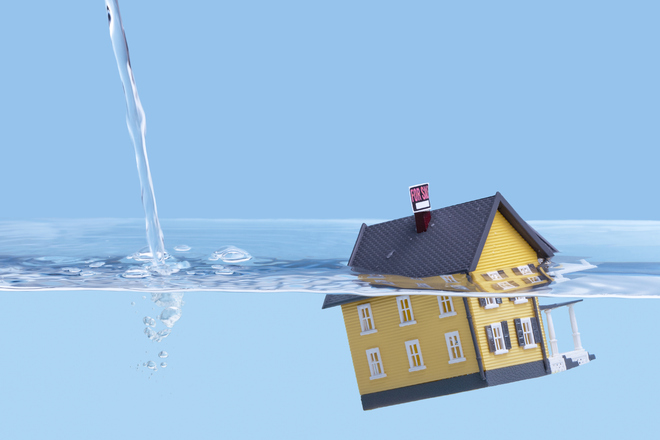
Thinkstock
With the onset of monsoon thousands of people experience water damage in their homes. While you may have waterproof windows and doors you may not be ready to tackle the problems that come along with the rains. If you haven't done anything about this yet then here are some guidelines on how to get started with water proofing and the different techniques that you might choose from
Get to the root of the problem
Exposure to heavy rainfall causes seepage, damp walls, dripping ceilings and leakages. Water, which penetrates through concrete, can have immediate and long-term effect in the form of damage to building contents and even structural failure, if the problem is not dealt with quickly and effectively. It is, therefore, imperative to get the drainage system cleaned properly. Consulting a qualified engineer or architect, with relevant experience in this domain is also recommended for an appropriate water proofing method to be followed. This will not only ensure effective damage control but also help in avoiding any lasting damage.
Understanding of the cause of the leakage is extremely important to treat the same with appropriate measures. This is because strength of the structure determines its permeability and very little water and moisture can seep through high strength and dense concrete.
Corrective measures
One of the many corrective measures to address the problem is to use liquid waterproofing material for concrete and plaster. These new-age waterproofing solutions act as an ultimate tonic for cement, which can be used from the foundation up to the roof of the building. It is a specially formulated cement additive that increases the life of the building as a result of which there are no cracks, no rusting and no leakages.
Another measure is proper installation of a structural water proofing membrane over the exterior sheathing. While this is a viable DIY (do it yourself) project, it is normally applied during the construction process by the building contractor before exterior siding is installed.
Modern day water-proofing compounds are not just limited to prevent water ingress; these have gone beyond to building healthy constructions, emulsions, protective coatings etc to save a consumer from the vagaries of weather.
At present five types of water-proofing solutions are in vogue to treat different causes of water related damages. These are: conventional rigid systems, crystalline system, flexible membranes, chemical coating and water-repellent impregnates.
Conventional systems would include box-type water proofing with impervious stone slabs.
Crystalline waterproofing systems and flexible membrane water proofing systems involve application of chemicals on the surface of concrete.
Chemical coatings react with the soft by-products of the cement hydration process and form hard crystals. These crystals lodge themselves in the concrete pores, thereby making it impervious.
Water-repellant impregnates are silicones which due to their low-viscosity impart repellant property to the surface on application.
Prevention is the best strategy
Following basic principles of water proofing during the construction stage of your home or any concrete structure with 100 per cent commitment can make it water proof for its entire life span, or until there is some structural failure.
The primary aspect to be kept in mind while designing a house is to ensure the use of water- proof cement as base of the structure. This helps in avoiding water seepage through walls. It is also advisable to drain water to lower surfaces even in areas like internal portion of walls of domestic buildings, open car parking and lawns.
A thick coating of silicon for the terrace and exterior walls is an effective method for waterproofing. Using elastomeric paint, polyurethane, polysulfide and polymers of quality brands for external walls are also among effective solutions for water proofing besides bitumen water proofing systems.
New house builders should make the concrete dense and sound by water reduction with the help of admixtures or plasticizers, or by using integral water-proofing compounds. Water barriers should be provided with waterproofing coatings or membranes at the positive surface of structures like foundation and retaining walls in basement, wet areas (toilet, balcony and kitchen), terrace, overhead and underground tanks, swimming pools, podium slab etc.
Special care of construction joints should be taken by using epoxy bonding agent and other joint or gaps between the pipes and concrete with suitable construction chemicals as these are the most vulnerable sources, which aid seepage of water in the concrete.
Voids and cracks present inside underground concrete structure should also be filled up by injection grouting process to repel moisture.
CICO Technologies Limited, Pidilite Industries Limited are among firms that manufacture waterproofing compounds. CICO Tapecrete P151 provides a reliable solution to customers looking for water-proofing solutions. It is a water-proof surface coating which works in conjunction with cement and provides properties to combat the shortcomings of plain cement, particularly its poor adhesion properties, low impact strength, low flexural strength and thin section fragility. It can be used for surface treatment, protecting, waterproofing and repairing concrete and masonry. An eco-friendly product, it is easy-to-apply as a liquid and can be mixed with cement to achieve Tapecrete slurry. It can be applied by a nylon paintbrush on positive surfaces of concrete to make the latter waterproof.
Using a quality water-proofing coating is a key strategy to insure your home from water damage; however, even the best waterproofing coating may fail to stop moisture if the block walls are not in sound condition. So brush away loose mortar and broken block; remove dirt, grease, dust, and other surface contaminants with wire-brush.
Use quick-dry cement to patch cracks, holes, and joints.



























